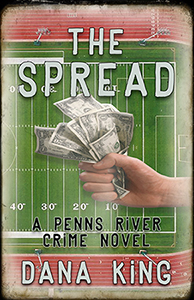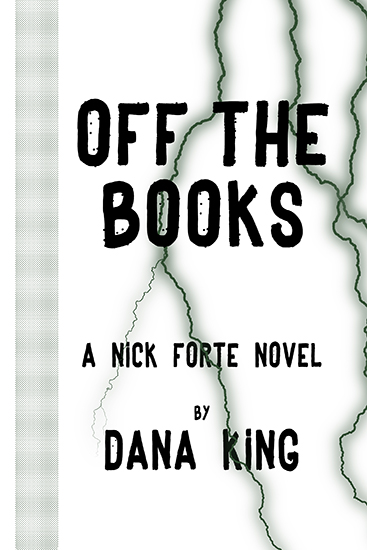I spent last weekend at the second (hopefully annual)
Creatures, Crime, and Creativity conference in suburban Baltimore. (Hunt
Valley, to be precise.) In the interests of full disclosure, I only went
because organizer Austin Camacho is a good friend, and I wanted to show the
flag. I expected to go, then need to come up with a plausible excuse in future
years. Well, finding the annual excuse will not be a problem. I’m already
registered for next year
C3 (as it’s called) has a few quirks in its programming. Panels
begin Friday at noon, run all day Saturday, and till about noon on Sunday.
Tables are set up around the bookseller’s location for a mass author signing at
5:00 each day, where readers can also get their programs and anthologies autographed.
(These are open to the public, whether registered for the conference, or not.) Meals are communal events, where writers and
readers of different styles, genres, and tastes get into conversations I’ve
rarely had at other, larger cons.
What I’d thought might be a weakness turned out to be a
strength: this is not a genre-specific conference. Crime figures heavily, but
so do vampires, romance, urban fiction, sci-fi, and a few I’m not sure what the
hell they were about. What mattered was, the attendees were readers and writers
who cared about what they wrote and read, and were more than willing to share
their enthusiasm with others. I attended a session during every time
slot—something I rarely do, even at Bouchercon—and took away something from
them all, save one, which was my fault. (I misinterpreted the title.)
Four authors of various styles and genres were featured in
interviews, speeches, and “master classes,” in which a guest author spoke as a
panel of one on a specific topic. (Alphabetically, C.J. Ellisson, John
Gilstrap, Brad Parks, and Rebecca York.) Below are some highlights, in more or
less chronological order.
In “Using the Five Senses to Engage Your Readers,” panelist Dorothy
Spruzen made a point for not explaining too much. When noting a section of her
book where concert goers were always happy to hear something melodic, and would
gripe about more contemporary pieces, she used Tchaikovsky and Shostakovich as
examples. Her thinking was, everyone knows about Tchaikovsky, and they’ll
figure out enough about Shostakovich through the context if they don’t know
about him already. Trusting the readers’ intelligence. What a concept.
When discussing “How Gut-Wrenching Should [Crime Scenes}
Be?” a discussion broke out about the recent trend for audiences to accept
behavior (read: violence) by the protagonist that may exceed even that of the
villain, and where this has come from, what Austin Camacho referred to as
“Batman Syndrome.” TV’s 24 was mentioned more than once. It was
also pointed out that intelligence and security professionals are appalled by
this, as, put simply, it doesn’t work. Make someone hurt bad enough, he’ll tell
you anything.
John Gilstrap opened Saturday morning with a presentation
called, “Broken Bones, Ballistics, and Backdrafts: Technical Stuff the Writers
Get Wrong.” With a Master’s in Safety Engineering, a successful career as a
thriller writer, and an energetic and entertaining presentation manner, John
was perfect for this session. His introductory slide refers to him as an
“Explosive Safety ‘Expert’” (“Expert” in quotes), as a reminder to himself not
to get cocky.
Brad Parks, author of the Carter Ross series of humorous
thrillers, spoke on writing techniques, beginning with the first four
paragraphs of Charlotte’s Web, which
he described as a great take-off on the thriller genre, as the first four
paragraphs provide a.) an underdog the reader can root for; 2.) dire
circumstances; and iii.) a flawed character with agency to save the underdog. A
few highlights:
·
Every character needs to have a secret. You
don’t have to tell what it is, but you should know.
·
Lee Child’s theory of how many characters to
use: Think of them as actors needed on a set, with their own needs: food,
costumes, personal maintenance, expectations, agents, personalities, etc. How
many of them do you want to deal with, and how often?
·
Suspense = (What I want to Know – What I know
already) x How badly do I want to know it?
·
There must be conflict on every page. One person
wants one thing, another wants something else, they can’t both get what they
want, and they’re both right.
·
Be the best you you can be. If 90% think you’re
a schmuck, the remaining 10% can make you a bestseller forever.
Plus lots of other good stuff, delivered with a quantity and
quality of humor that got me to buy a book, and I rarely buy books at
conferences.
“You’ve Got Fan Mail: Honored Guests Discuss Mail From
Fascinating Fans” was a discussion with the featured authors about mail they
have received. Great fun—with a few cautionary notes—it had a selfish benefit
for me, as the plot element I need to get the next Nick Forte novel moving in
the direction I want it to go was handed to me on a platter.
At dinner, John Gilstrap spoke about serendipity and
failure, tracing his success back through events in his life that led to
something else that created a “Six Degrees” kind of path to successful
novelist. Except…there was that whole part in the middle where his book
underperformed the publisher’s expectations—for which the author had to take
full responsibility because, as we all know, publishers do not overpay for
books; authors and agents oversell them—and how he rebuilt his career. John is funny,
engaging, and totally immersed in what he’s saying, and I have to confess he
hit a few notes in discussing failure (“only you can declare yourself a
failure”) that had me genuinely choked up. If you ever get a chance to hear him
speak, do so.
Sunday morning’s opening session was with C.J. Ellisson, who
writes Urban Fantasy and Contemporary Erotic Romance. Neither of these genres
are in my wheelhouse, but she is also an acknowledged master of using Facebook
to promote sales. (Somehow “Mistress of Facebook” doesn’t sound quite right.)
She spend most of an hour showing how to create a unified and strong presence
on Facebook without being overbearing about it, and I’m looking forward to
consolidating my notes and getting to work on my presence there, and on
building an honest-to-God web site.
The final session concerned how to keep a series going. A
discussion evolved on point of view, during which Brad Parks made an
observation so striking, I think most authors there were with me in the, “Of
course! Why didn’t I think of that?” category. When writing close third person
and having trouble with a potentially wandering POV, write the scene in first
person, then go back and change what needs to be changed. There’s never any
trouble in staying with first person.
C3 is still a small conference, and, for now, that intimacy
is a major part of its charm, as there is little trouble catching up with whoever
you’re looking for. There’s a lot of room for growth in attendance, and the
directors appear to have everything under control to make that happen. So, if
you’re a reader or author looking for a great long weekend immersed in your
favorite activity, look into the Creatures, Crime, and
Creativity conference for next year, scheduled for September 25 – 27. I’ll
be there, but you should go, anyway.




2 comments:
Dana it was great to have you at the conference and I'm so glad you enjoyed it. Can't wait for next year!
Funny, Dana.
1, b, iii
Just wanted you to know I "got" it. I'm guessing you took notes at the Con. Well written post.
See ya soon.
DB
Post a Comment